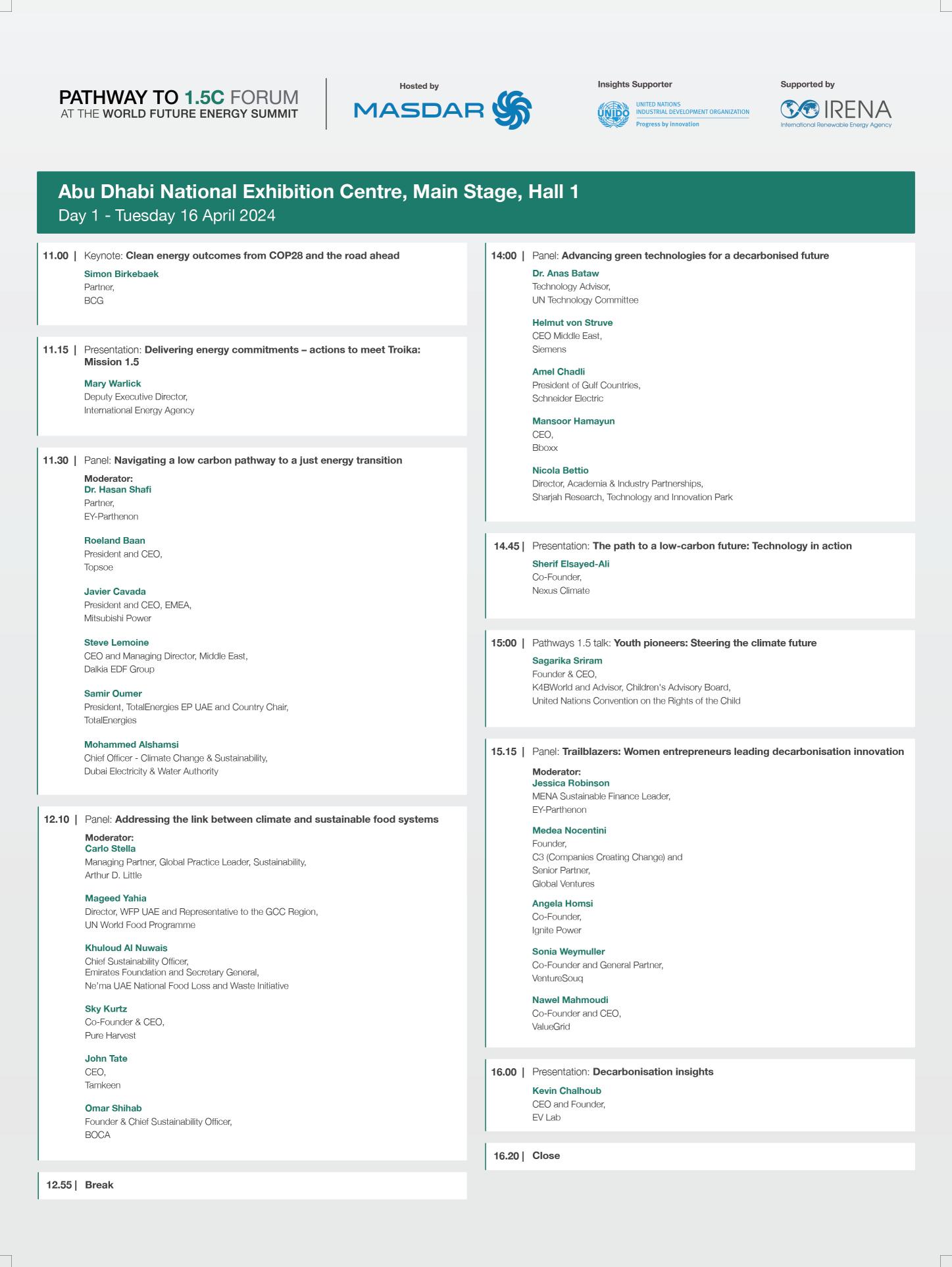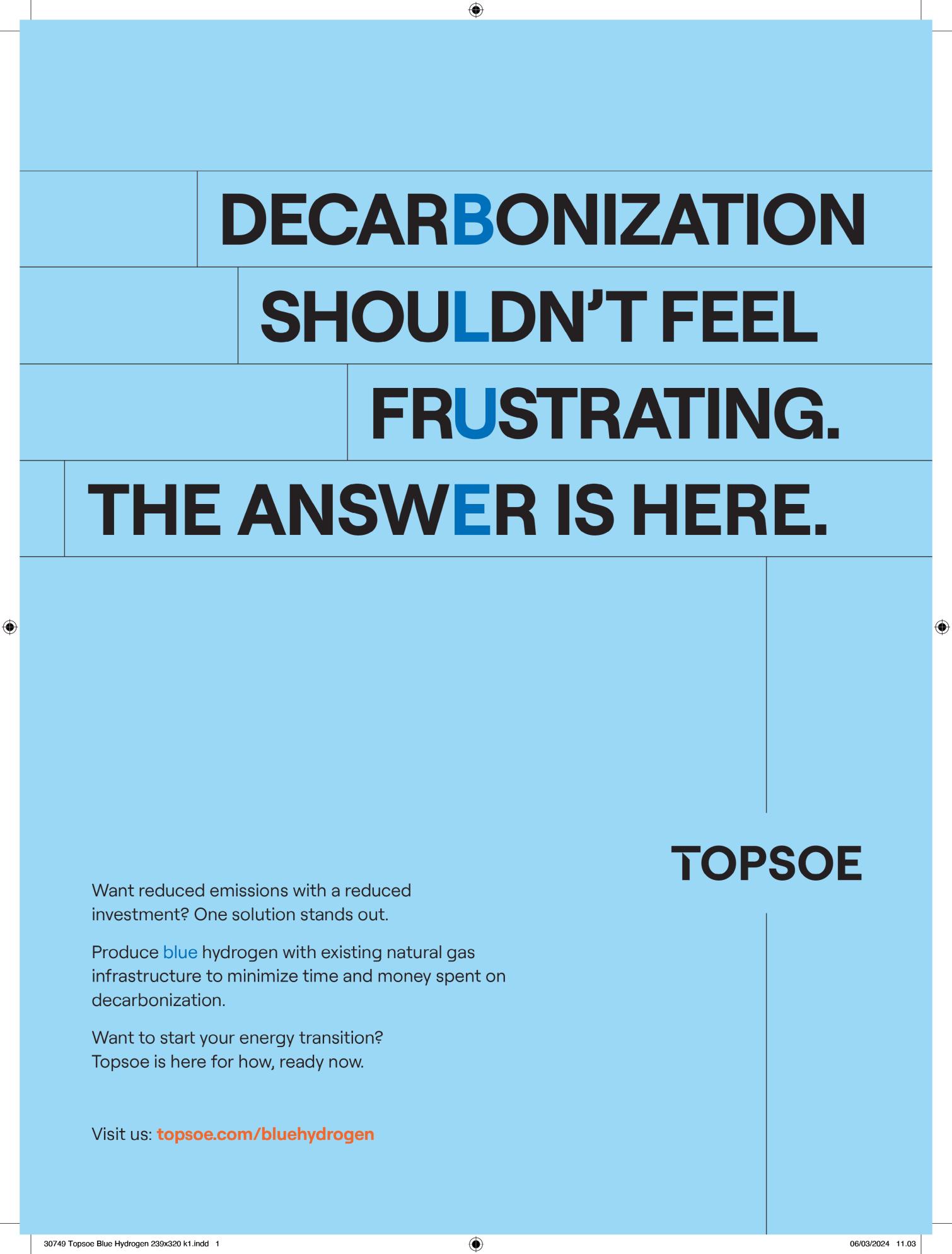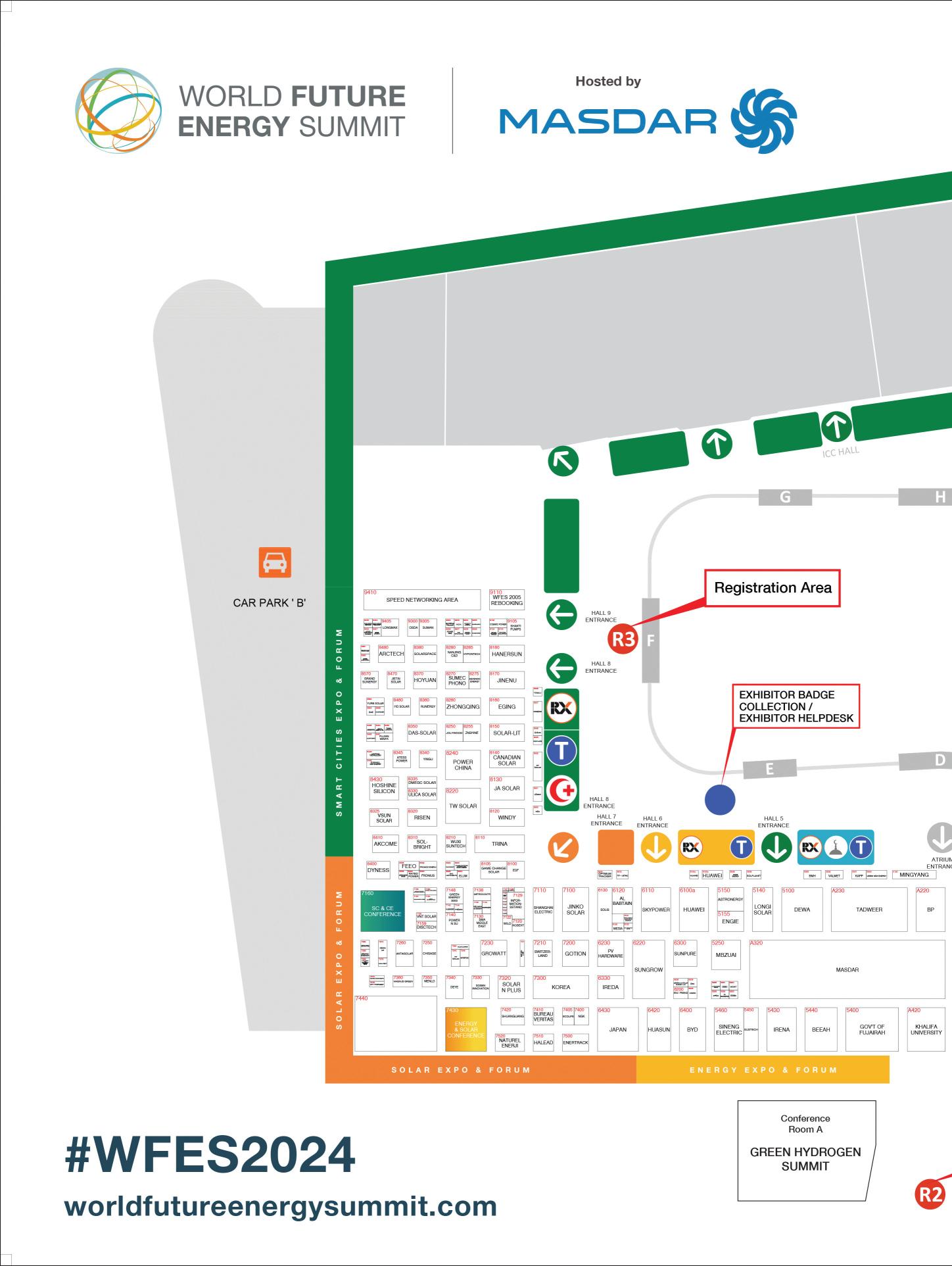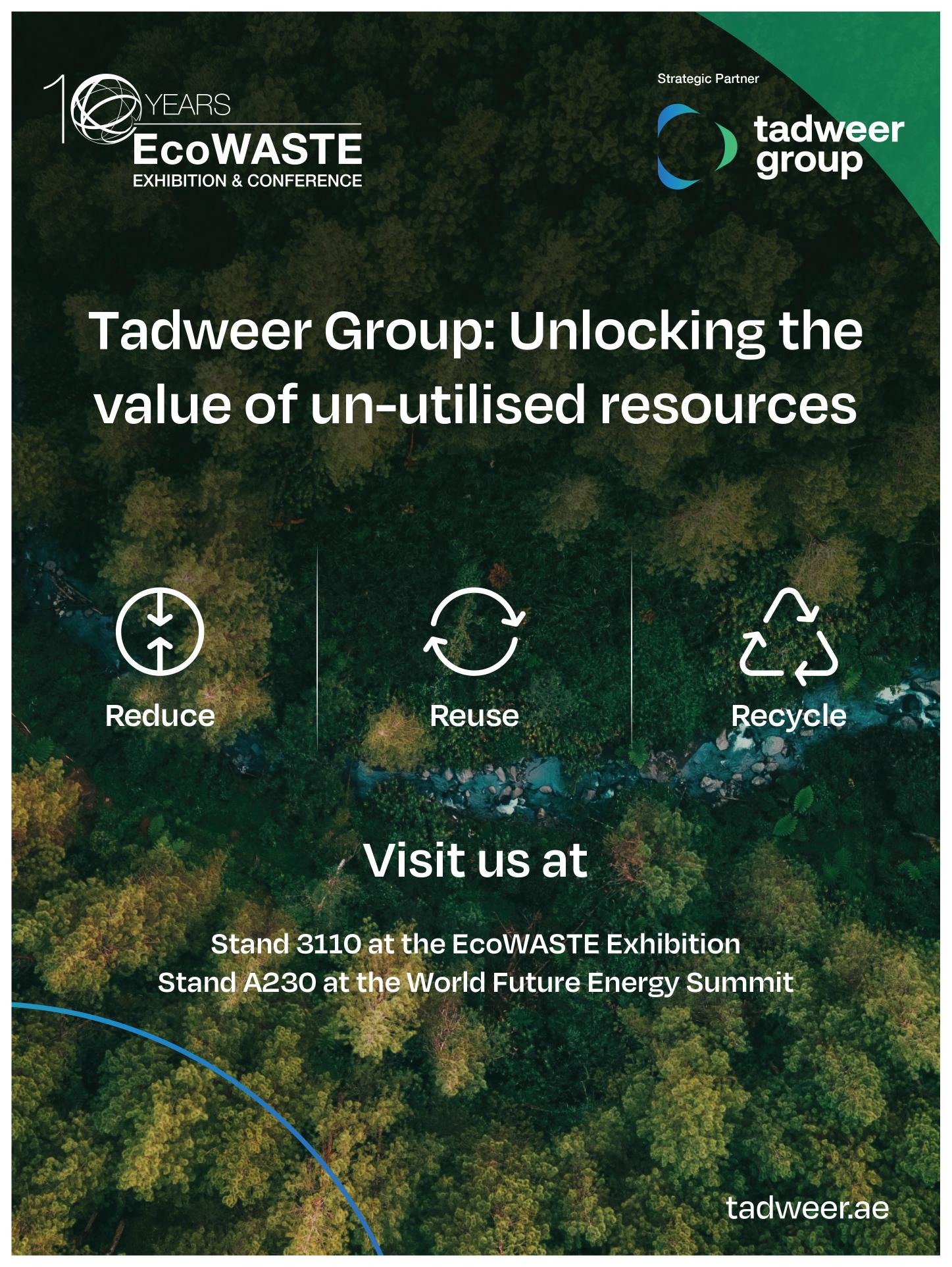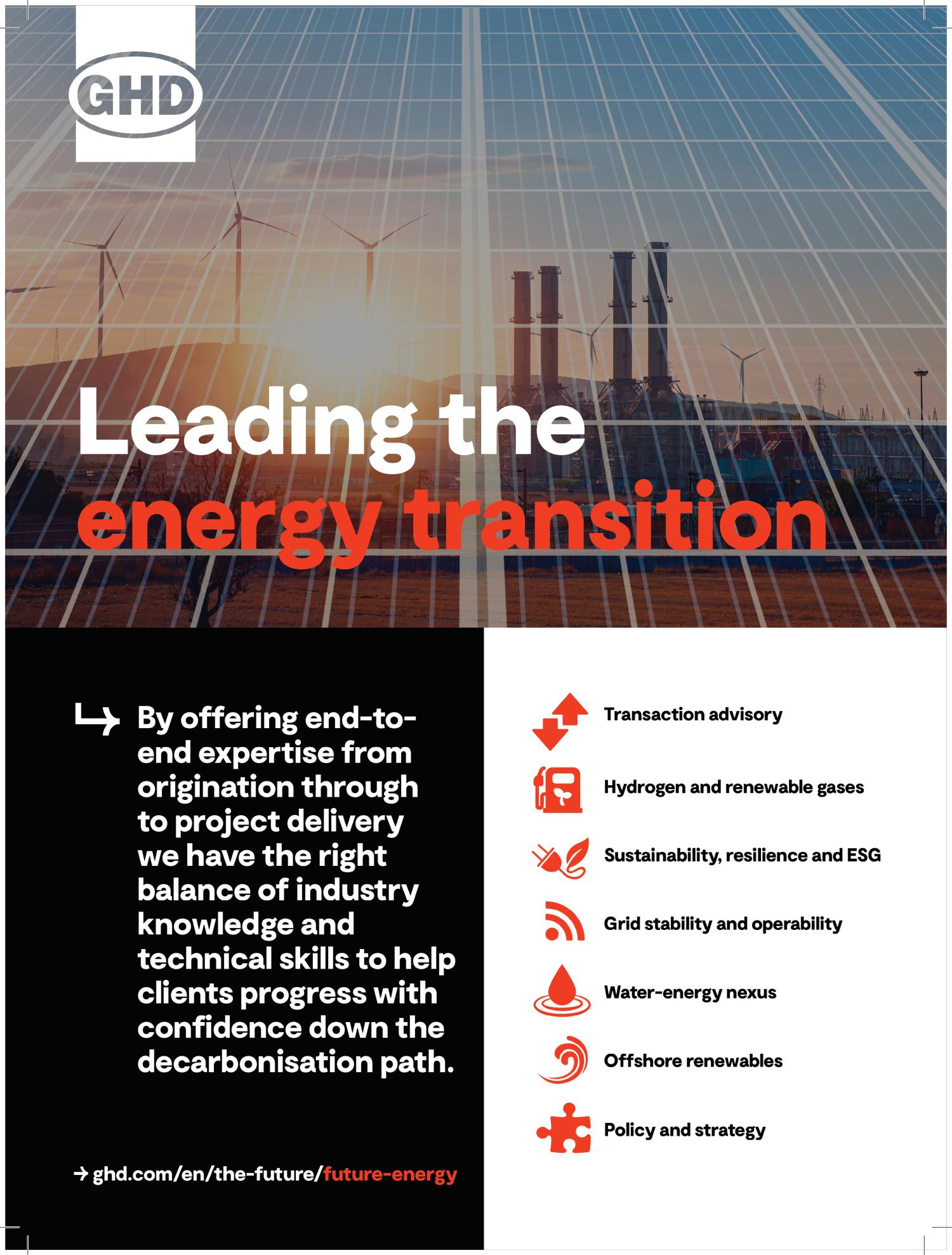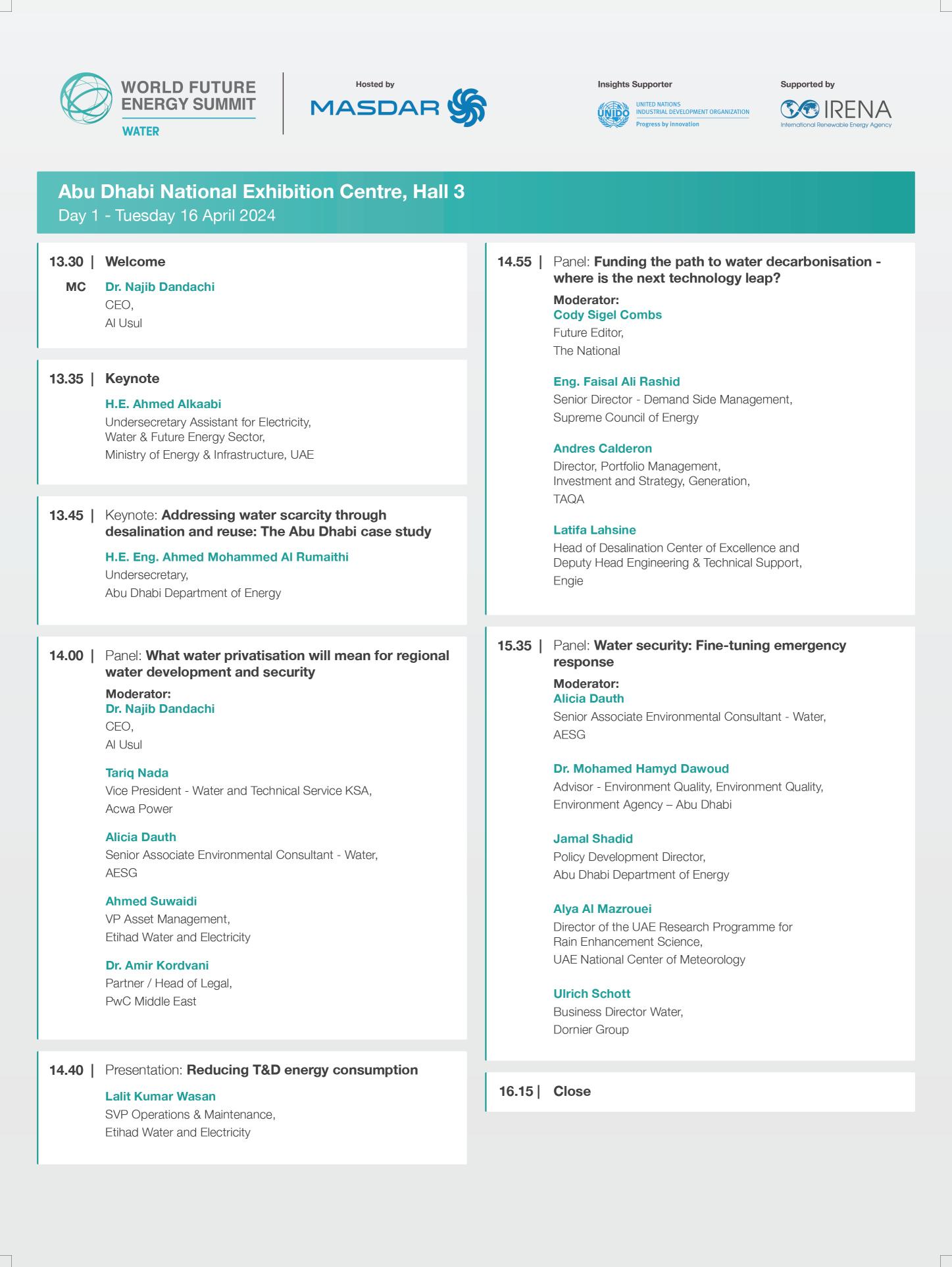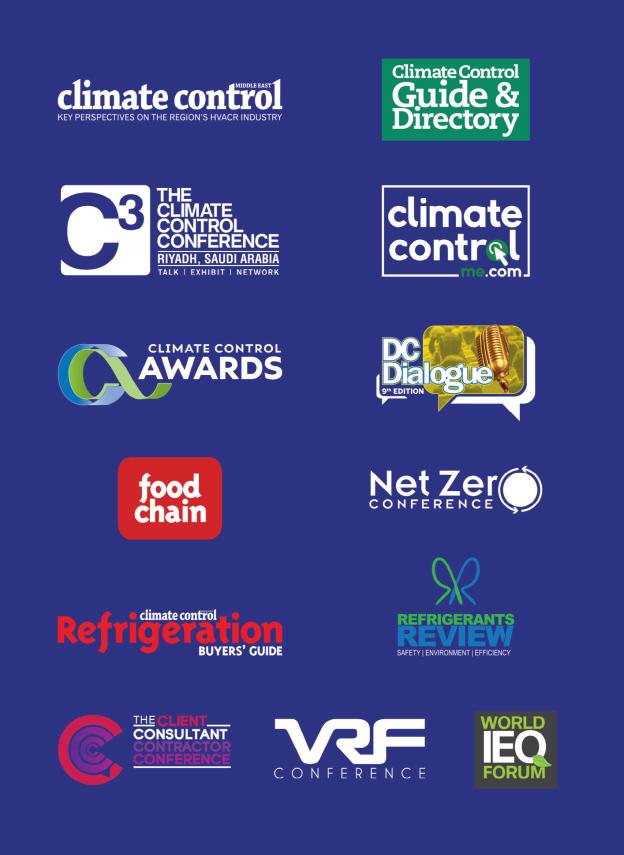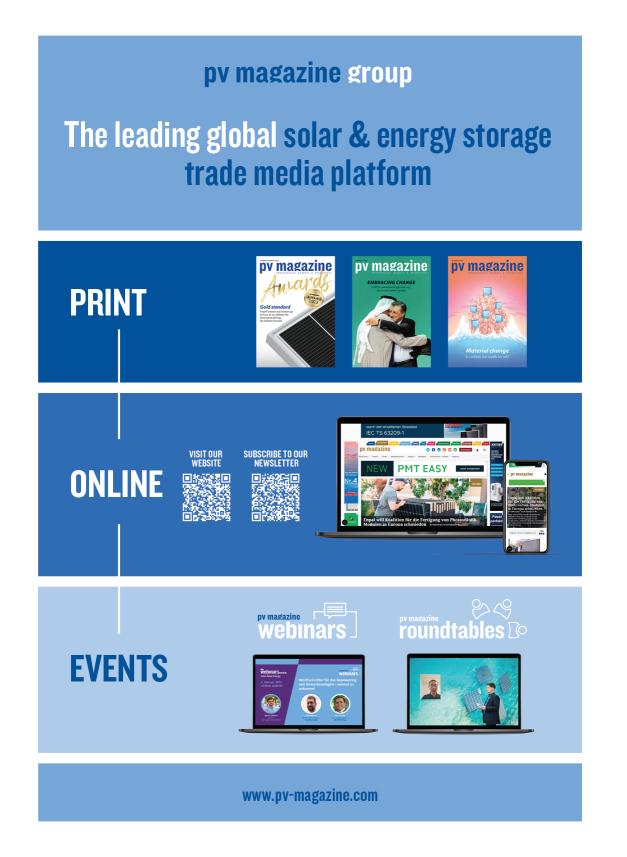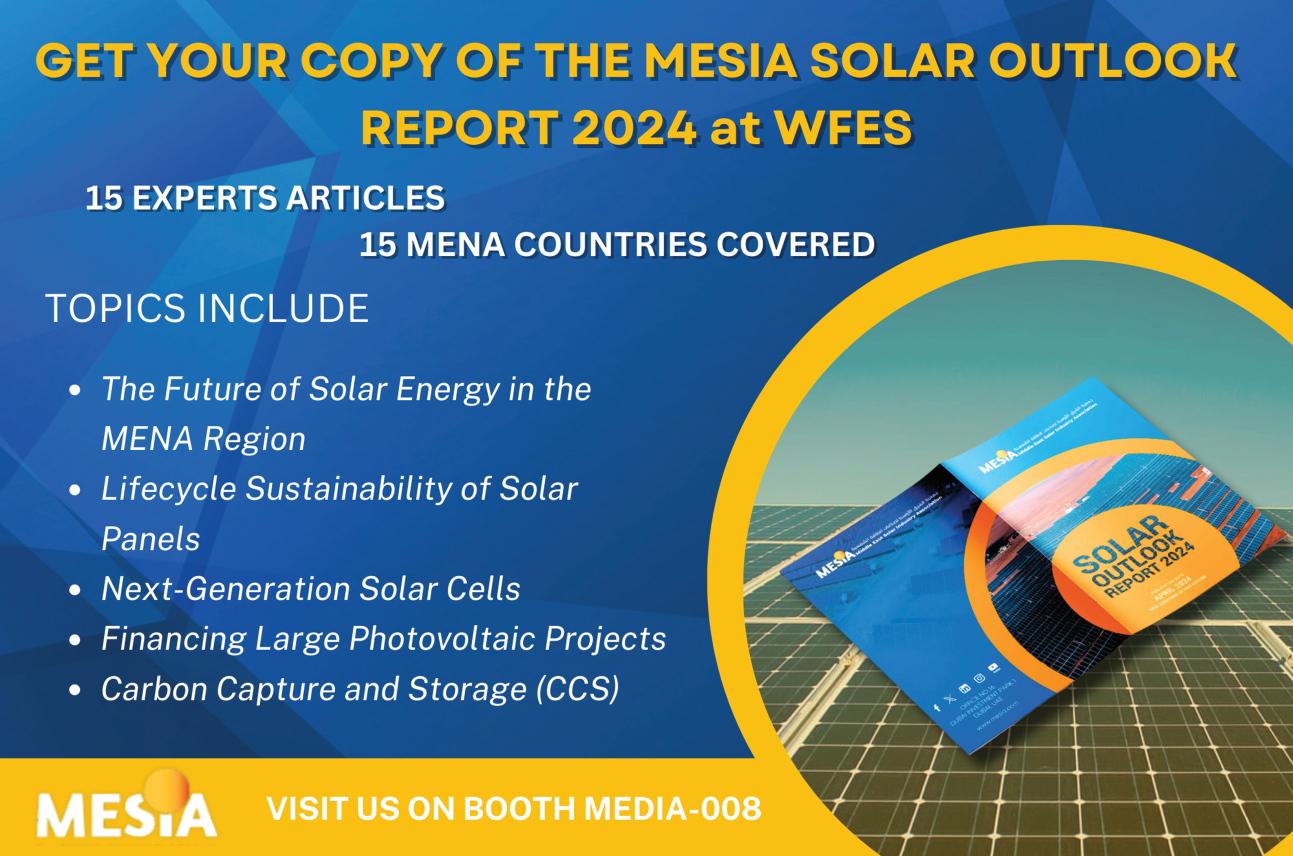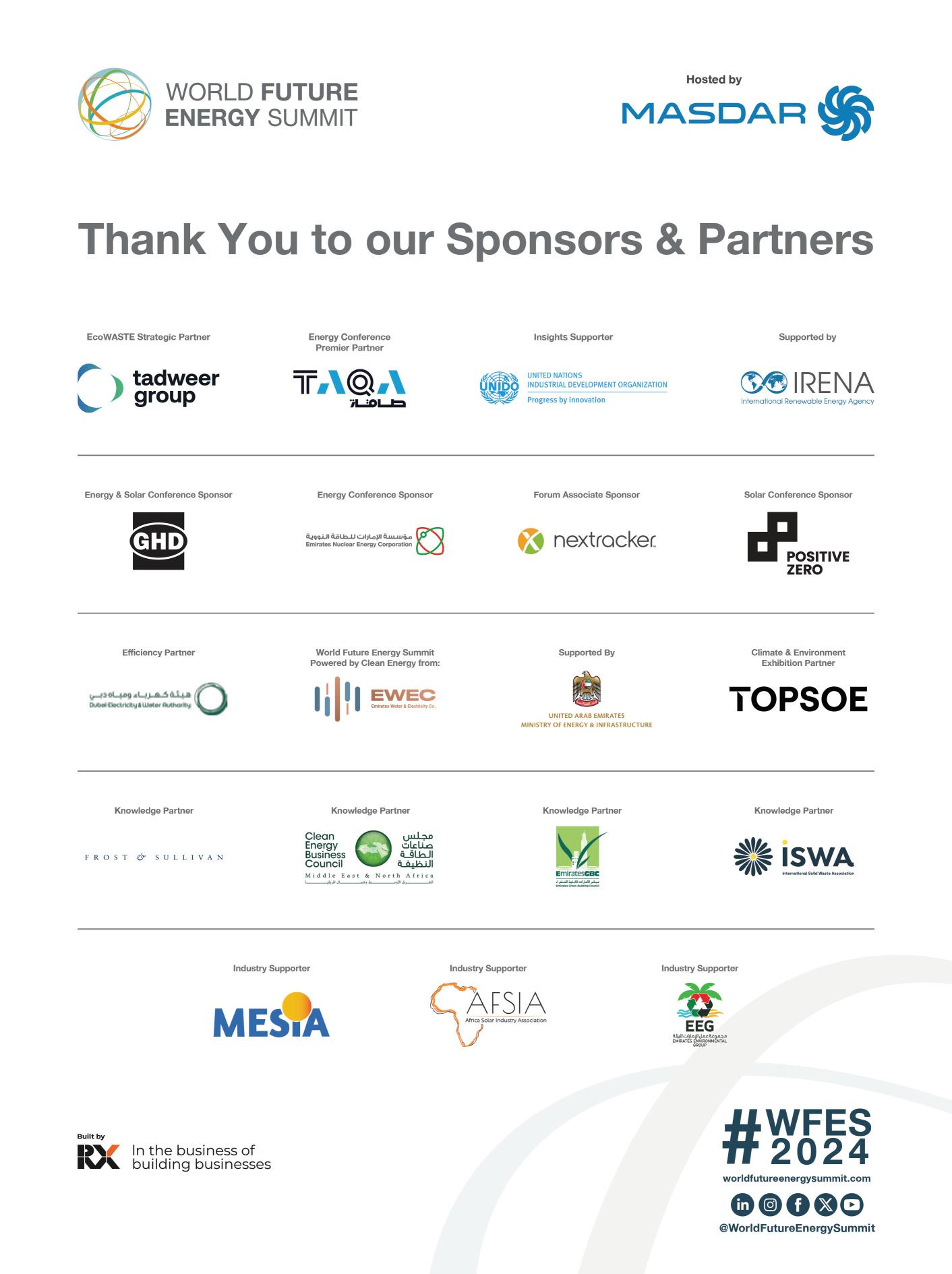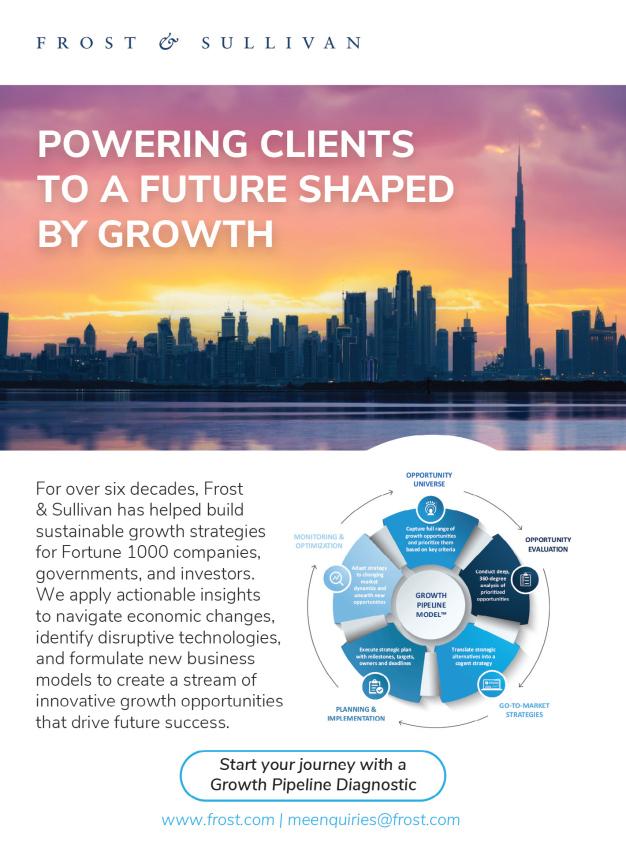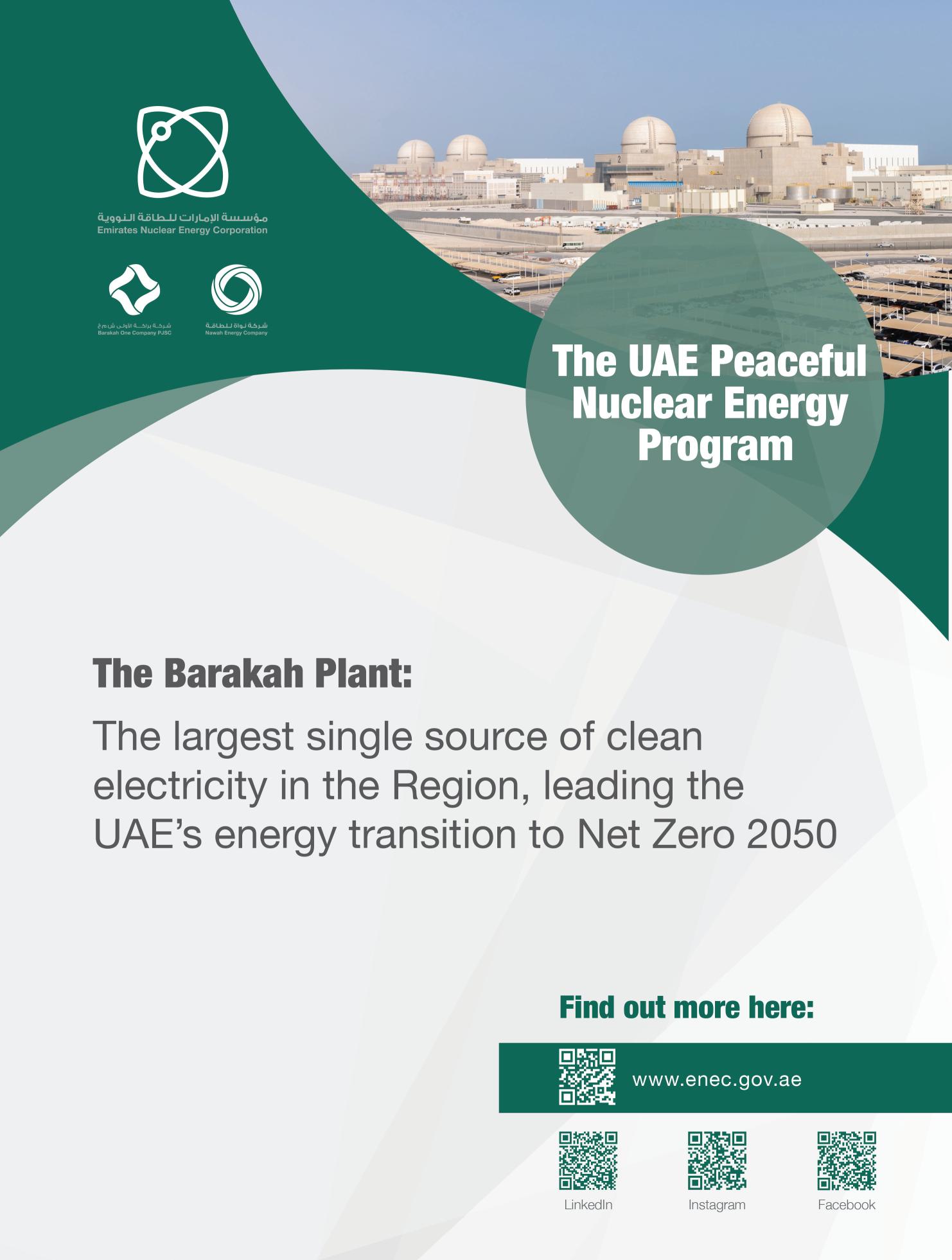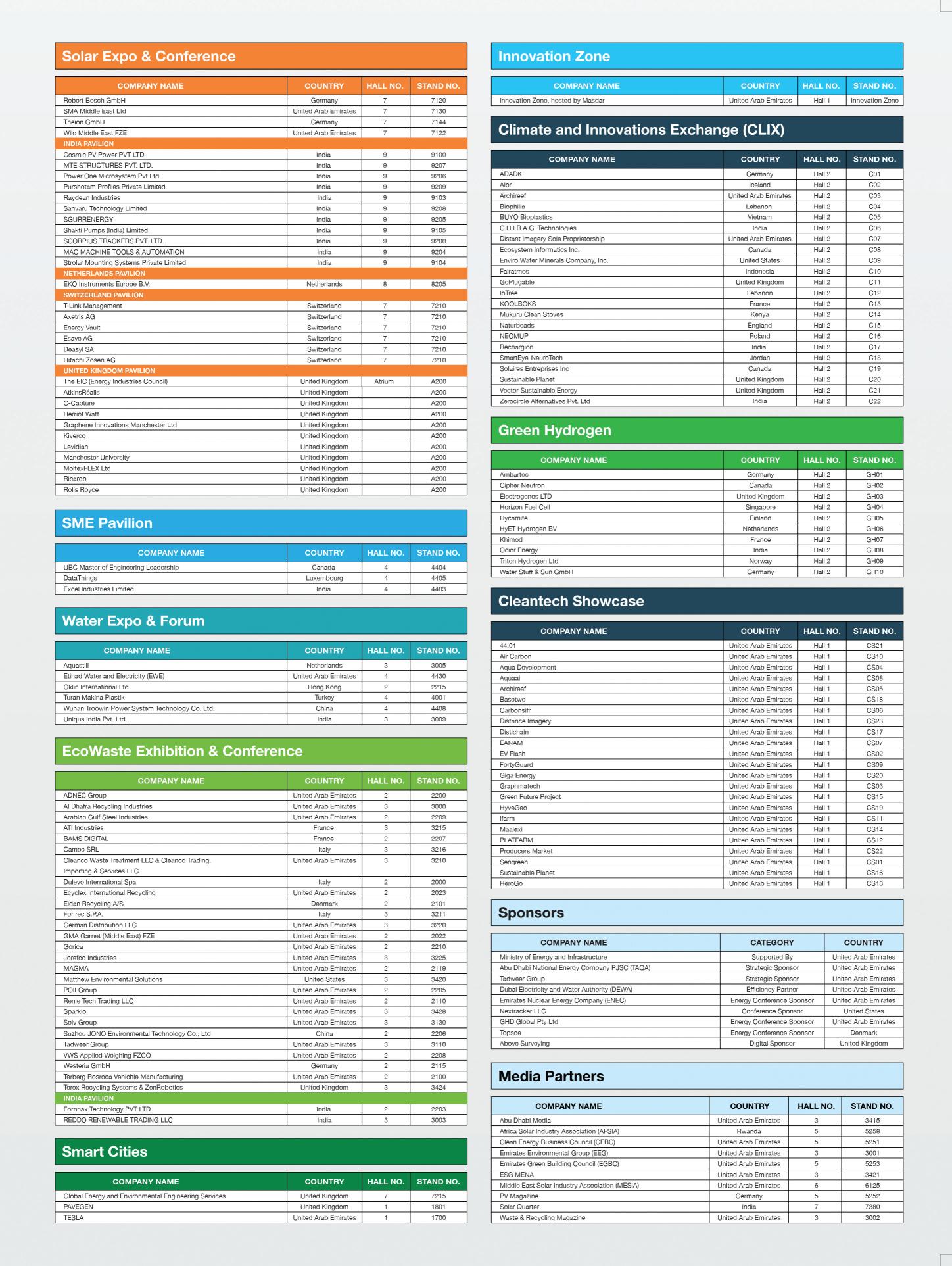DAILY NEWS
DAY 1, 16 APRIL 2024
Today 01
World Future
Energy Summit
opens with focus on keeping 1.5°C target alive
Her Highness Sheikha Shamma bint Sultan bin Khalifa Al Nahyan, President & CEO, UAE Independent Climate Change Accelerators, opened the World Future Energy Summit 2024 with a keynote on keeping the 1.5°C pathway alive.
“Climate related blended finance can be unlocked if different stakeholders including government, private sector and civil society, are given a forum to discuss their differences and difficulties and find solutions to achieve shared aims.”
“We must find solutions to unlock greater opportunities for blended climate finance to flourish, if we are to keep our 1.5°C target in sight.”

Empowering women founders
The largest female participation in the 16-year history of the World Future Energy Summit will demonstrate the growing influence of women across the entire energy ecosystem and provide a platform to bring in their critical perspectives on key issues within the sector.
While female voices will be ringing out across the event, the dedicated Climate Innovations Exchange (CLIX) initiative will serve as a podium for femaleled startups, SMEs and innovators to showcase their innovative products to global investors.
The conference will also feature a dedicated panel session around the female entrepreneurs that are leading global efforts to combat climate change and organisational decarbonisation efforts.

Her Highness Sheikha Shamma bint Sultan bin Khalifa Al Nahyan opened the World Future Energy Summit with a keynote address on keeping the 1.5°C pathway alive.
Central focus
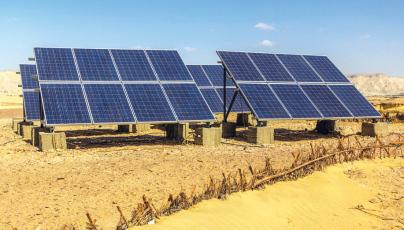
Honing in on renewables
Renewables will be at the centre of World Future Energy Summit debates. As well as exploring ways of tripling renewable power generation capacity, global energy decision-makers will also look at ways to triple nuclear energy by 2050, double energy efficiency this decade, reach near zeromethane emissions by 2030, and cut the share of fossil fuels in the world’s energy production.
“The event will be a catalyst to further COP28 resolutions along the road to reality.”
Conferences
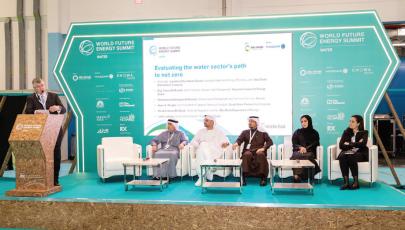
Fresh grounds for discussion
Familiar favourites are returning for this year’s edition of the World Future Energy Summit in the form of five curated conferences to navigate the pressing challenges facing the industry today, and facilitate a cleaner, greener tomorrow.
The Solar & Clean Energy, EcoWASTE, Water, Smart Cities, and Climate and Environment conferences will be held across the three days, pulling together the brightest minds in the industry to tackle its leading concerns.
Meanwhile, the 2024 edition will also see the inclusion of three new forums to open the dialogue even wider and bring a unique focus on the pertinent topics of Green Finance, eMobility and The Pathway to 1.5C.
CLIX
Organised by Page 8 Page 18 Page 5 Hosted by EcoWASTE Strategic Partner Insights Supporter Supported by


“We urgently need a systemic shift away from fossil fuels to course-correct and keep the tripling goal within reach."
Francesco La Camera, Director-General of IRENA
Masdar unites policymakers and trailblazers at Green Hydrogen Summit
Masdar hosted the Green Hydrogen Summit on the first day of the World Future Energy Summit, bringing together policymakers, industry leaders, investors and entrepreneurs to explore opportunities and the industry’s future.
During his keynote address, former UK Prime Minister Rt Hon. Boris Johnson praised the UAE as “one of the world’s great centres of technological innovation,” before citing the country’s hosting of COP28 last year as a “triumph” for reversing netzero sceptics.
“We did the soft COP [26 in Glasgow]; you did the hard COP,” said Johnson, who adorned a green tie for the occasion.
Following Johnson’s keynote, Swiss explorer and clean technology pioneer Dr Bertrand Picard, Chairman of Climate Impulse, revealed his latest renewables-fuelled globetrotting expedition: circumnavigating the globe in an aircraft powered by green hydrogen.
The new flight, which Piccard hopes to complete in 2028, follows his historic 23-day journey around the world in a solar-powered aircraft in 2015 that started and concluded in Abu Dhabi.
While Dr Piccard stressed his renewable-powered flying machine is not yet complete, he reiterated the importance of ambitious projects to curtail

The agreement will foster collaboration in developing, promoting and utilising biofuels.
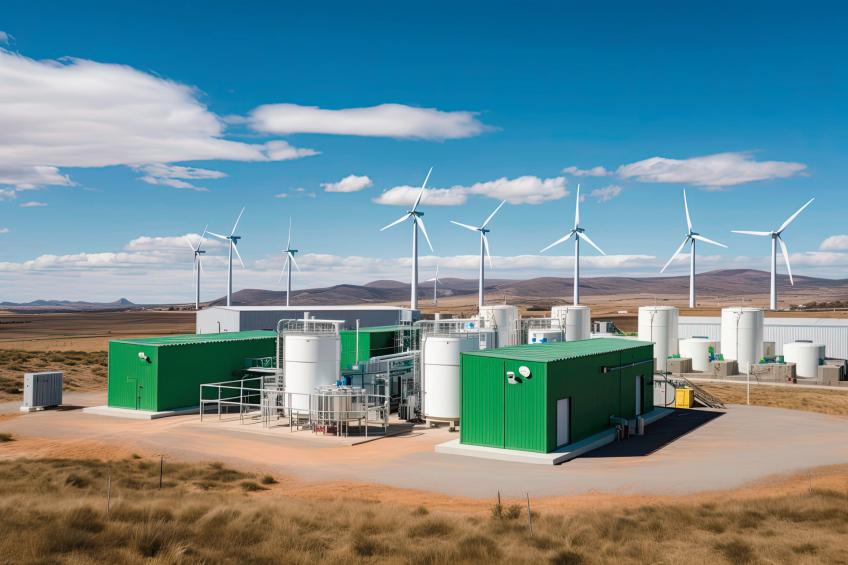
reluctancy surrounding what he dubbed the “limitless potential” of green hydrogen. “We are at the edge of a new energy revolution,” said Dr Piccard.
“People say we will never be able to produce enough clean energy, but the impossible does not exist in reality; it exists only in the mindset of people
who believe the future is an extrapolation of the past. The future requires us to be disruptive and invent completely new ways to think.”
“We need solutions and flagship projects that show what we can do. This is why the Green Hydrogen Summit is important, we must show what is possible.”
MoU to accelerate development of biofuels
The Ministry of Energy and Infrastructure (MOEI) of the United Arab Emirates and Lootah Biofuels, a leading circular economy pioneer producing biofuel from cooking oil in the UAE, have signed a Memorandum of Understanding (MoU) which aims to solidify bilateral relations and foster collaboration in developing, promoting, and utilising biofuels as a sustainable and alternative energy source for the nation.
The key focus areas under the MoU include collaborative R&D initiatives to explore and develop the biofuels market in the UAE and actively sharing knowledge and technical expertise through workshops, seminars, and knowledge-sharing sessions for industry stakeholders. The partnership will also facilitate the mutual exchange of comprehensive data pertaining to biofuel production and commercial distribution. This data will be instrumental in informing policy decisions and tracking progress towards national clean energy goals.
Both parties will raise awareness and promote the use of biofuels across the UAE. This will contribute to enhancing the country's energy security and achieving its environmental sustainability and Net-Zero 2050 objectives.
www.worldfutureenergysummit.com 3 DAY 1 | 16 APRIL 2024 DAILY NEWS
04
WATER CONFERENCE: What’s on the agenda
The Summit examined the “limitless” potential of green hydrogen’s future within the energy landscape.

“As we work to further an equitable green energy transition, we see an unprecedented opportunity to drive greater job and economic opportunities for women, youth and lowincome communities.”
Makena Ireri, Director of Demand, Jobs and Livelihoods at GEAPP
UAE Consensus at the core of discussions
In the opening speech of the World Future Energy Summit 2024, Her Highness Sheikha Shamma bint Sultan bin Khalifa Al Nahyan, President & CEO, UAE Independent Climate Change Accelerators, wasted little time in acknowledging the “truly remarkable achievements” of COP28, such as the UAE Consensus and the loss and damage fund. Her Highness welcomed the announcement of the COP Presidencies Troika and Roadmap to Mission 1.5°C, before focusing the rest of her speech on climate finance – stating that while important progress has been made, “huge gaps remain that need to be filled in order to mitigate and adapt to the impact of climate change.”
For the remainder of the day, the UAE Consensus stayed close to the spotlight with Francesco La Camera, Director-General, International Renewable Agency (IRENA), following in Her Highness’s footsteps on the main stage, opening his speech by stating, “We stand at a crucial junction as a result of the COP28 Consensus. We have committed to the goal of tripling renewables by
2030, however, achieving this requires promise and urgency. While the objective of tripling renewables is within our reach, it requires immediate collaboration on a global scale.”
“The mandate is clear,” La Camera declared. “The time for decisive action is now. Let us enter call for global course correction, stating our collective dedication and urgency towards the future powered by green, inclusive and equitable sustainable energy.”
In a fireside chat following the inauguration of this year’s Summit, Omar Al Braiki, Deputy Chief Negotiator, COP28 reflected on the outcomes of last year’s Conference: the UAE Consensus towards a low-carbon pathway, following which CEOs and directors from leading companies and organisations including Emirates Steel Arkan, Emirates Global Aluminium, Tadweer Group, Emirates Nature-WNF and the Department of Economic Development, UAE, addressed action to meet a 1.5°C climate threshold.
Nextracker’s NX Horizon-XTR smart solar tracker systems to be used in Al Kahfah solar power plant
Nextracker, a leading global provider of intelligent solar tracker and software solutions, has been selected by ACWA Power and Larsen & Toubro Limited (L&T) to provide its all-terrain tracker NX Horizon-XTR™ for a 1.17 GW installation at Al Kahfah solar power plant, in Saudi Arabia’s Central Province. Al Kahfah is one of the three major solar PV Independent Power Producer (IPP) projects being led by Badeel and ACWA Power. This solar plant will provide clean energy to the Saudi Power Procurement Company (SPPC) as part of the renewable energy projects essential to meet the targets of Vision 2030 and the Ministry of Energy’s National Renewable Energy Program to increase renewables in the nation’s energy mix to 50% by 2030.
The Al Kahfah project will deploy Nextracker’s NX Horizon-XTR smart solar tracker systems. The area the solar plant will occupy is dominated by a hilly, hard-soil land surface that would typically require a combination of explosives and grading machines to flatten the land the new solar tracking system will cover. Nextracker’s all-terrain solar tracker system can conform to the natural terrain to reduce the need for costly land grading while significantly reducing environmental impact.
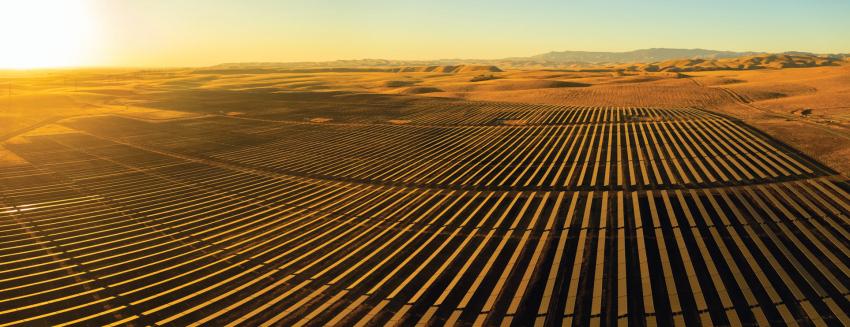
Nextracker
HYDROGEN: MENA overview
The landmark Consensus was also heavily featured in the speech of Adbulla Malek, Head of Strategy, Energy Transition, UAE Climate Change Special Envoy, who remarked, “At COP28, the world came together to adopt one of the most important decisions ever recorded by the UNFCCC. The UAE Consensus confronted climate change head on and made breakthroughs across the entire agenda. It was the first COP agreement to mark a clear pathway for a fair, just and equitable energy transition, guided by science and focused on keeping 1.5 °C alive; it was the first to include energy targets to triple renewables and double energy efficiency by 2030, and it was the first COP to agree to the language for transitioning away from fossil fuels, which has been a challenging subject for the past 30 years.”
These and other outcomes, he noted, were “unprecedented in the history of COP. They are poised to fundamentally reshape the entire energy system.”
Strong results for Topsoe’s SOEC electrolysis technology
Topsoe has reached an important milestone at the inaugural demonstration test for its Solid Oxide Electrolyzer Cell (SOEC) electrolysis technology.
Topsoe’s SOEC electrolysis technology is a modular design that operates at significantly higher temperatures compared to other electrolyzer technologies – a tested and proven process that enables industrial-scale production of green hydrogen using renewable electricity. When coupled with waste heat from downstream production (from processes producing ammonia, methanol, or steel production), Topsoe’s SOEC technology will produces 30% more hydrogen per total power input when compared to conventional electrolyzer technologies. It further allows for the lowest levelised hydrogen cost per megawatt volume, no matter the industry.
Held at the Company’s demonstration site in Frederikssund, Denmark, Topsoe ran a 2,000-hour demonstration in industrial conditions of 12 SOEC stacks, which included 1,200 cells. The purpose was to demonstrate the technology’s capabilities in a hydrogen plant and validate the SOEC electrolyzers under industrial-standard intensity. After completion of the test, all 1,200 cells were shown to operate at high levels of stability while maintaining stable temperature levels.
DAY 1 | 16 APRIL 2024 DAILY NEWS World Future Energy Summit | Daily News 4
10
has more than 90 gigawatts of smart solar trackers installed around the world.

“By integrating robust EV charging networks into Sharjah’s infrastructure, we are solidifying the emirate’s position of leadership in sustainability and helping secure its future as a climate-positive, net-zero city.”
Khaled Al Huraimel, Group CEO, Beeah
EXHIBITOR LIST: Who’s at the show
10th EcoWASTE Exhibition & Forum to address the Gulf’s waste challenges
Organised by RX Middle East as part of the World Future Energy Summit, with Tadweer Group as Strategic Partner, the EcoWASTE Exhibition & Forum, taking place from 16-18 April, will bring together global stakeholders to explore innovative technologies that hold the potential to transform waste management practices.
Sessions will cover waste to energy, community engagement, the role of the circular economy in government decarbonisation targets, enhancing circular practices to create new revenue streams from waste management, and practical approaches to reduce packaging.
Ali Al Dhaheri, Managing Director and CEO, Tadweer Group, announced the return of EcoWASTE at a press conference “As we usher in the 10th edition of EcoWASTE, we are proud to pioneer opportunities and conversations focused on revolutionising recycling, reducing waste, and promoting a circular economy in the MENA region. Our proactive efforts to unlock the value of waste to help create a greener tomorrow align with our Waste to Zero goals, and ultimate ambition to divert 80% of Abu Dhabi’s waste from landfills by 2030. We look forward to bringing the industry together to exchange insights and engaging with world leaders, experts and the public as we continue to make key contributions to the UAE’s sustainability strategy and global emissions objectives."
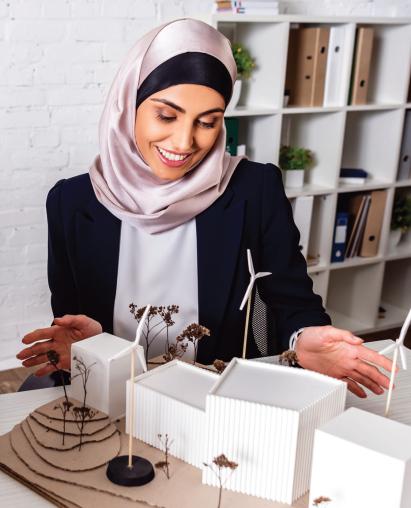
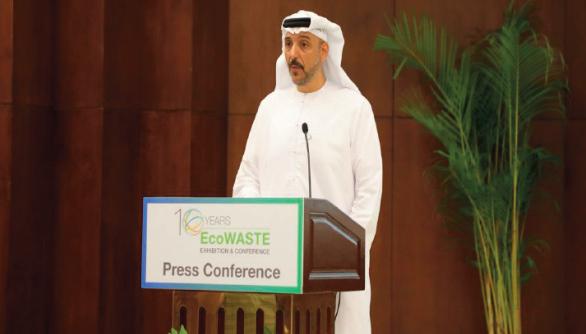
Ali Al Dhaheri, Managing Director and CEO, Tadweer Group.
Tadweer Group will highlight best practices from its own sustainability initiatives, including the construction of a new waste to energy plant in Abu Dhabi, which will begin in 2024 This will both divert waste from landfills and contribute to minimising reliance on traditional fossil fuels. Tadweer Group will also showcase updates on upcoming projects, such as a waste to sustainable aviation fuel plant in
Al Ain, launch its Waste to Art competition and host its Sustainable Stand Awards.
The exhibition will host prominent regional and international exhibitors, including Itay’s Dulevo International, Denmark’s Eldan Recycling, ATI Industries of France, the US-owned BTS Biogas SRL and Serbia’s Plastik Gogic.
CLIX to offer impactful platform for women
The World Future Energy Summit includes a dedicated area for its Climate Innovations Exchange (CLIX) initiative. The curated platform will give female startups, as well as SMEs and innovators, an impactful platform to demonstrate game-changing products and solutions to a global audience.
“The significant funding gap in achieving net zero targets necessitates a bottom-up approach, with innovation taking centre stage. Empowering women founders to devise solutions that decrease emissions, foster capital efficiencies and drive cost savings in the global energy transition, in a scalable and sustainable manner, is paramount,” said Medea Nocentini, Founder, C3 (Companies Creating Change) and senior Partner, Global Ventures.
Leen AlSebai, General Manager of RX Middle East and Head of the World Future Energy Summit, said, “The high level of female participation – currently standing at approximately 30 per cent of our speaker cast at this year’s World Future Energy Summit – directly supports our carefully curated CLIX initiative, which will shine additional light on the critical role women play in tackling climate change and promoting sustainability through technology, innovation, and ingenuity.”
www.worldfutureenergysummit.com 5 DAY 1 | 16 APRIL 2024 DAILY NEWS
32
Empowering women founders is paramount.


“We place great emphasis on enhancing the efficiency of energy and water production through innovation and continuous upgrades to our production plants, as well as the deployment of cutting-edge technologies across all our facilities and projects.”
HE Saeed Mohammed Al Tayer, MD & CEO of Dubai Electricity and Water Authority (DEWA)
IRENA urges action for 2030 renewable power goal
Meeting the global target set at COP28 to triple renewable power capacity by 2030 hinges on creating favourable conditions for such growth. While technically feasible and economically viable, achieving this goal demands determination, policy support, and substantial investment.
According to the International Renewable Energy Agency (IRENA) report “Tracking COP28 outcomes: Tripling renewable power capacity by 2030,” 2023 witnessed a record-breaking deployment of renewable energy, with 473 gigawatts (GW) added to the global energy mix. However, the report highlights that reaching the target depends on overcoming systemic and structural barriers to the energy transition.
Although evolving policies, geopolitical shifts, and decreasing costs have spurred rapid expansion in renewable energy markets worldwide, tripling renewable power capacity necessitates concerted efforts to bolster infrastructure, policies, and workforce capabilities. This entails increased financing and closer international cooperation
To meet the target, an average of nearly 1,100GW of renewables capacity must be installed each year by 2030 — more than double the record set in 2023. Additionally, annual investments in renewable power generation must skyrocket from US$570bn in 2023 to an average of US$1,550bn between 2024 and 2030.
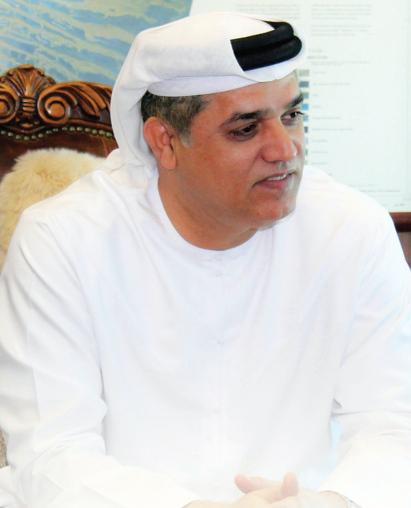
Dr Abdulla Al Mandous, Director General of the National Center of Meteorology (NCM) and President of the World Meteorological Organization (WMO).

Despite record renewable growth in 2023, the energy transition remains off track due to persistent structural barriers and a notable shortfall in investment.
Francesco La Camera, Director-General of IRENA, remarked, “In the wake of the historic UAE Consensus on tripling renewables at COP28, these capacity additions — despite setting a new record — clearly indicate that achieving the target is far from guaranteed. IRENA monitors related progress across key indicators every year. Our data confirms that progress continues to fall short, and the energy
transition remains off track. We urgently need a systemic shift away from fossil fuels to coursecorrect and keep the tripling goal within reach."
Achieving the tripling target is far from assured, as an additional 7.2 terawatts (TW) of renewable power would need to be deployed to reach the required 11 TW by 2030.
World Water Day: NCM’s commitment to advancing water security
Dr Abdulla Al Mandous, director general of the National Center of Meteorology (NCM) and president of the World Meteorological Organization (WMO), has underscored NCM's commitment to advancing water security on World Water Day. In a world grappling with escalating water stress, NCM advocates for strengthening water resilience through innovative research, technology, efficient resource conservation, and international partnerships.
Through initiatives such as the Mohamed bin Zayed Water Initiative and the UAE Research Program for Rain Enhancement Science (UAEREP), NCM spearheads rain enhancement research, a pivotal solution in regions facing water scarcity. Rain enhancement technology, also known as cloud seeding, leverages natural precipitation processes to augment rainfall, offering a sustainable and cost-effective approach to water security. With an extensive infrastructure comprising over 60 weather stations, integrated radar networks, and specialised aircraft, UAEREP has funded 14 projects since 2015, collaborating with 85 countries and investing US$22.5mn. These projects focus on optimising seeding materials, autonomous technology, and advanced modelling, aiming to enhance rainfall and water security in arid regions globally.
www.worldfutureenergysummit.com 7 DAY 1 | 16 APRIL 2024 DAILY NEWS OUR SUPPORTERS: Partners and sponsors 35
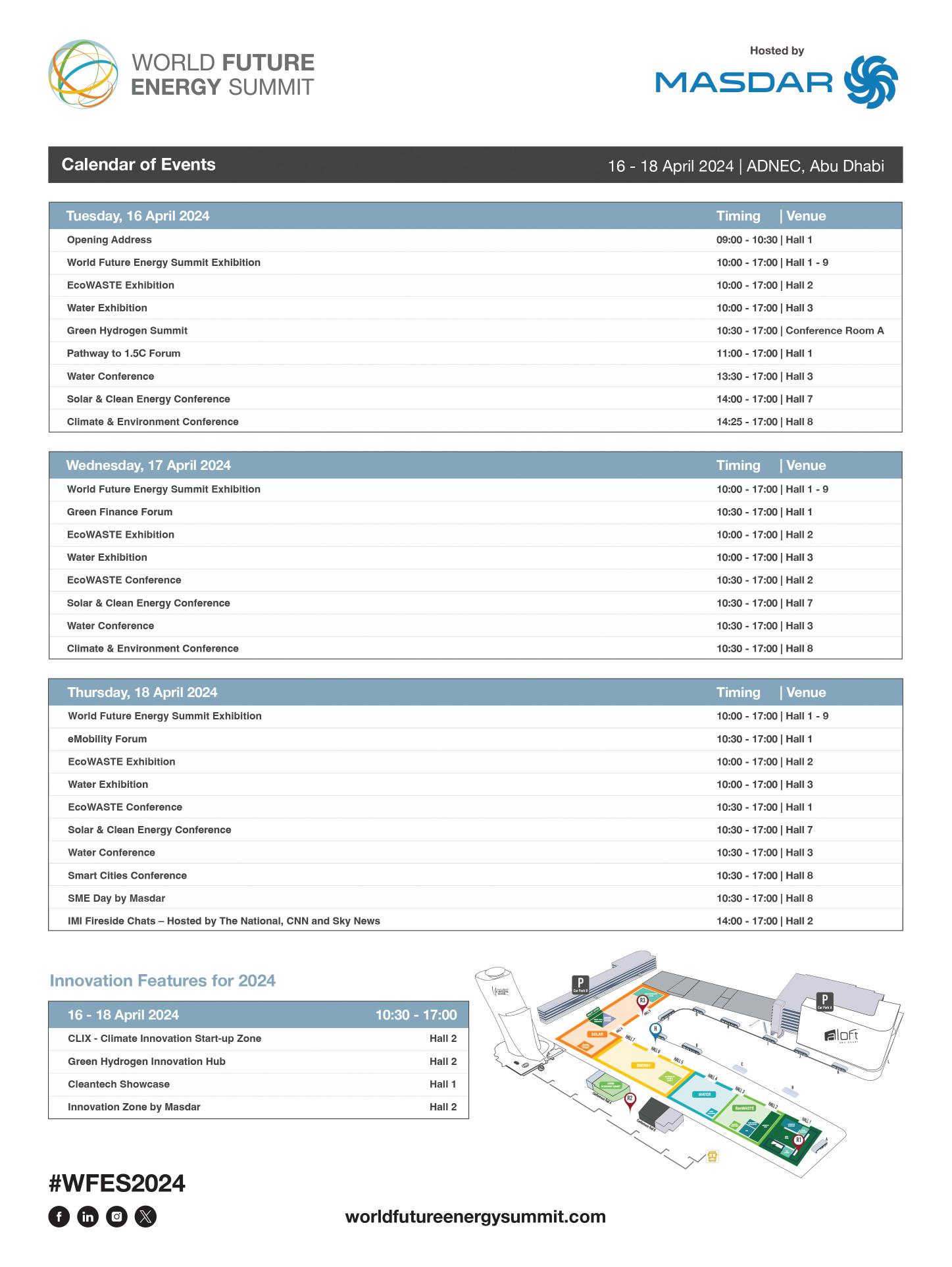

“The policy will play an important role in our decarbonisation drive, contributing to reducing carbon emissions through increasing the consumption of biodiesel by 20 per cent by 2050.” (Commenting on the UAE National Policy for Biofuels)
Suhail bin Mohammed Al Mazrouei, UAE Minister of Energy and Infrastructure
WATER: Asset management
Masdar set to play a leading role at the World Future Energy Summit
Abu Dhabi Future Energy Company
PJSC – Masdar, the UAE’s clean energy powerhouse, is hosting the World Future Energy Summit with a packed programme of events focused on the Action Agenda and historic UAE Consensus agreed at COP28.
The Masdar Pavilion in Hall 5 at the World Future Energy Summit will act as a hub for innovation, collaboration and knowledge sharing, with its theatre featuring an engaging programme of panels and presentations, including forums by Masdar’s global strategic initiatives, Y4S (Youth 4 Sustainability) and WiSER (Women in Sustainability, Environment and Renewable Energy).
The Innovation Zone, hosted by Masdar, will feature a series of industry panels with innovators and experts, focusing on the latest climate solutions. It will include technology showcases from ADSW partners, international startups and SMEs across urban mobility, clean energy, agritech, and artificial intelligence, and will officially launch the SME Day at the World Future Energy Summit on April 18 to continue the legacy of the COP28 SME Climate Hub initiative.
HE Dr Sultan Al Jaber, UAE Minister of Industry and Advanced Technology, Chairman of Masdar and President of COP28, said, “By delivering the UAE Consensus and the Action Agenda, COP28 raised the bar on climate action, but our work is just
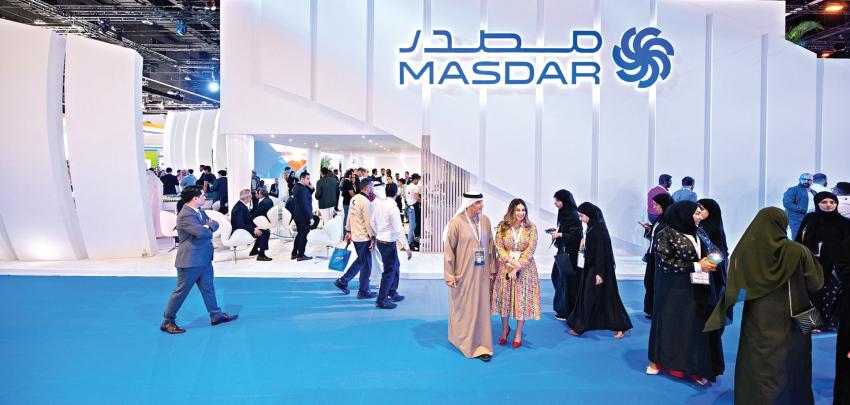
beginning. Now is the time to turn agreement into action and accelerate our efforts to meet the ambitions of the UAE Consensus and keep 1.5°C within reach. The size of the problem demands we explore all avenues and all technologies, including Artificial Intelligence (AI). I encourage the energy industry to invest in Artificial Intelligence and harness its climate potential. The World Future Energy Summit provides a crucial platform for every stakeholder – including governments, industry leaders and policymakers – to play their part and unlock the investments needed to deliver the energy transition.”
Masdar will also host the annual Green Hydrogen Summit on April 16, in Hall A at ADNEC, which aims to accelerate the development of the global green hydrogen economy to support the energy transition. Highlighting green hydrogen’s growing
The World Future Energy Summit is the ideal platform for us to showcase our commitment to advancing clean energy, accelerating the energy transition in support of the UAE Consensus agreed at COP28.
Mohamed Jameel Al Ramahi CEO, Masdar
potential to support economies in reaching net-zero emissions, the Green Hydrogen Summit will bring together policymakers, industry leaders, forwardthinking investors and pioneering entrepreneurs.
Mohamed Jameel Al Ramahi, Masdar’s Chief Executive Officer, said, “As a founding host and longstanding supporter of the World Future Energy Summit, Masdar looks forward to working with global partners, leaders and innovators to address some of the world’s most pressing climate challenges. From Masdar’s innovative pavilion programming to the Green Hydrogen Summit, the World Future Energy Summit is the ideal platform for us to showcase our commitment to advancing clean energy, accelerating the energy transition in support of the UAE Consensus agreed at COP28.”
One of the world’s fastest-growing renewable energy companies and global clean energy pioneer, Masdar is advancing the development and deployment of solar, wind, geothermal, battery storage and green hydrogen technologies to accelerate the energy transition and help the world meet its net-zero ambitions. Masdar has developed and invested in projects in over 40 countries with a combined capacity of over 20 GW, providing affordable clean energy access to those who need it most and helping to power a more sustainable future.
Masdar is jointly owned by TAQA, ADNOC, and Mubadala, and is targeting a renewable energy portfolio capacity of 100GW by 2030 while aiming to be a leading producer of green hydrogen by the same year.
www.worldfutureenergysummit.com 9 DAY 1 | 16 APRIL 2024 DAILY NEWS
13
Masdar will play a key role at the World Future Energy Summit, as in previous years. (Image source: Masdar)

“Now is the time to turn agreement into action and accelerate our efforts to meet the ambitions of the UAE Consensus and keep 1.5°C within reach.”
Dr Sultan Al Jaber, COP28 President, UAE Minister of Industry & Advanced Technology, Chairman of Masdar
FLOORPLAN: Find your way around
Scaling up green hydrogen development in the MENA region
The MENA region is pushing ahead with big hydrogen plans, and investment interest is growing, says Sania Aziz.
Over the last few years, hydrogen has gained support from governments across the world, and is being hailed as the next breakthrough in alternative fuels.
Globally, momentum behind low-emissions hydrogen has continued to grow despite the slow roll-out of financial incentives and stubborn cost pressures, the International Energy Agency (IEA) said last year.
The global hydrogen generation market size was valued at US$158.8bn in 2023, according to research agency MarketsandMarkets. The firm added that this is expected to reach US$257.9bn in 2028, growing at a compound annual growth rate (CAGR) of 10.2% from 2023 to 2028. By 2030, this number is expected to reach US$410.6bn.
Green hydrogen
Currently, there are seven different ways to produce this element, which are colour coded to indicate the method used. Blue hydrogen, for example, uses mainly natural gas, and includes the use of carbon capture and storage (CCS) to trap and store the carbon that is released during the process.
When produced through clean energy from surplus renewable energy sources it is referred to as green hydrogen. Electrolysers use an electrochemical reaction to split water into its components of hydrogen and oxygen, emitting zero-carbon dioxide
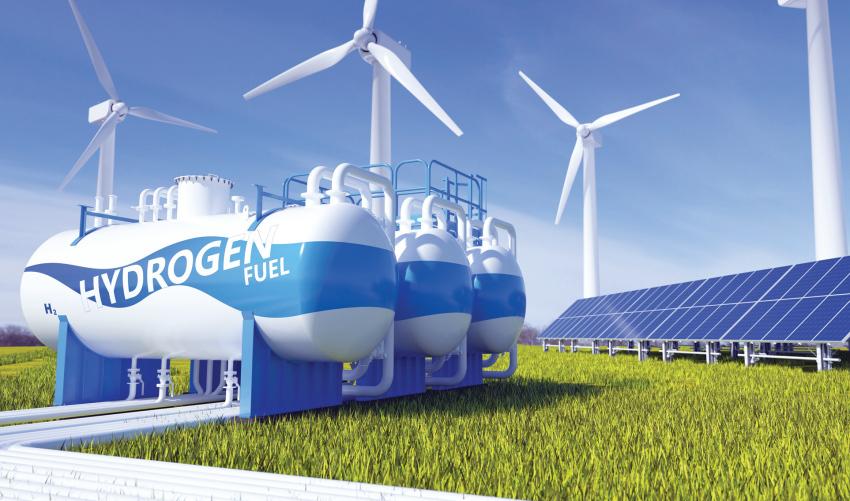
Hydrogen deployment in the MENA region is growing.
in the process. This is one of the most expensive ways of producing hydrogen, and makes up less than 1% of global hydrogen production.
Efforts ramp up in MENA
Despite it being the most expensive, efforts are underway to make produce green hydrogen on a larger scale. Currently being built at Oxagon at Neom in Saudi Arabia, the Neom Green Hydrogen Company (NGHC) is constructing the world’s largest commercial-scale green hydrogen facility. The project plans to use 4GW of solar and wind energy to produce up to 600 tonnes of green hydrogen in the form of liquid ammonia per day by
Thanks to its huge potential for low-cost solar and wind, renewable hydrogen is set to bring multiple benefits to Oman.
Fatih Birol IEA Executive Director
2026. The site has received US$6.1bn in investments from 23 domestic, regional, and international banks and investment firms.
NGHC has also signed a 30-year green offtake agreement for all green ammonia produced at the plant.
A report from the International Energy Agency (IEA) showed that rich renewable resources and vast land expanses could make Oman a competitive low-emissions hydrogen supplier by 2030.
Oman aims to produce at least one million tons of renewable hydrogen a year by 2030, up to 3.75mn tonnes by 2040 – and up to 8.5mn tonnes by 2050, which would be greater than total hydrogen demand in Europe today.
“Oman is an oil and gas producer country that is taking an enlightened approach to its energy future, with a clear long-term vision and strong net zero ambitions,” the IEA said, quoting its Executive Director Fatih Birol. “Thanks to its huge potential for low-cost solar and wind, renewable hydrogen is set to bring multiple benefits to Oman.”
Public-private Partnerships
Meanwhile, the UAE has also set ambitious goals towards producing and exporting green hydrogen. The country aims to produce 1.4mn tonnes of
DAY 1 | 16 APRIL 2024 DAILY NEWS World Future Energy Summit | Daily News 10
22

“By tapping further into women's skills in issues such as climate change, they can act as centres of creativity, bolstering the world's capacity to address and adapt to these challenges.”
Her Excellency Dr. Amna bint Abdullah Al Dahak, Minister of Climate Change and Environment
hydrogen annually by 2031 and expects the figure to increase tenfold to 15mn by 2050. The UAE is also incentivising the private sector to focus on hydrogen. For example, DEWA and Siemens Energy partnered for a green hydrogen pilot project in Dubai, which is the first in the MENA region to produce hydrogen through solar power generation.
The plant has been operational since May 2021. In 2022, TAQA, ADNOC and Mubadala invested in Masdar for clean energy fuels. Masdar is also rapidly scaling up its green hydrogen business, by upping production capacity to one million tonnes by 2030. The company is also partnering with Emirates Steel Arkan to produce steel using green hydrogen as a power source.
With Daimler Trucks, Masdar is exploring the feasibility of liquid green hydrogen exports from Abu Dhabi to Europe by 2030. For OMV, Masdar is helping the company’s refineries decarbonise using hydrogen. Meanwhile, Hyundai Motor Company and BEEAH Group are testing fuel cell electric trucks in the UAE, and how they can be used for logistical purposes.
“Benefits accrue for the UAE not only through hydrogen export earnings, but the ability to link the hydrogen sector to the UAE’s technology ecosystem and, vitally, its financial services sector, creating an exchange for hydrogen-linked financial assets and derivatives,” stated the Dubai Future Foundation in
a report showing the outlook for the hydrogen industry in the UAE and the wider MENA region.
The foundation, which assesses the role of hydrogen in the UAE’s growing economy, added, “This strategy requires an assertive approach to maximise production in the near term in order to out-compete other early entrants and create a durable market advantage.”
Momentum builds in Egypt
Egypt too is looking to become a leading global player in the industry, capitalising on the advantages of its strategic location, sizable domestic market, and plentiful solar energy resources. Egypt is progressing green hydrogen development with the introduction of incentives for hydrogen production and agreements to develop green hydrogen projects, with a view to providing 5-8% of the world’s hydrogen by 2040.
Earlier this year, Egypt’s House of Representatives approved a draft bill which mandates incentives for green hydrogen production, including tax credits of 33-55% of the tax payable on revenues generated from the production of green hydrogen, exemption from VAT for equipment and materials used for green hydrogen products, and various waivers on taxes, contracts and land registration fees.
Momentum is building for hydrogen projects, with an agreement with Saudi-based ACWA Power for the development of a green hydrogen project with
ON THE AGENDA: Solar and clean energy forums
18
a production capacity of 600,000 tonnes green ammonia per year, with the prospect of expanding capacity to 2mn tonnes per year in the second phase. The agreement was signed between ACWA Power and The Sovereign Fund of Egypt (TSFE), the Suez Canal Economic Zone (SCZone), the Egyptian Electricity Transmission Company (EETC), and the New and Renewable Energy Authority (NREA).
Egypt has signed seven memoranda of understanding with international developers in the fields of green hydrogen and renewable energy in the Suez Canal Economic Zone that could lead to total investment worth around US$40bn, according to a recent cabinet statement.
While UAE-based Fertiglobe, a leading nitrogen fertilizer and ammonia producer and distributer, has signed an MoU with AD Ports Group to store and ship urea and ammonia in Egypt and the UAE.
Egypt is also reported to be looking at possible cooperation opportunities with the European Union in the field of green hydrogen.
For the MENA region to develop its full potential as a green hydrogen hub, progress needs to be made on issues such as standardisation and certification to facilitate cross-border trade. Progress was made in this area at COP28, with initiatives launched to accelerate commercialisation of hydrogen and the development of cross-border value chains for hydrogen and its derivatives.
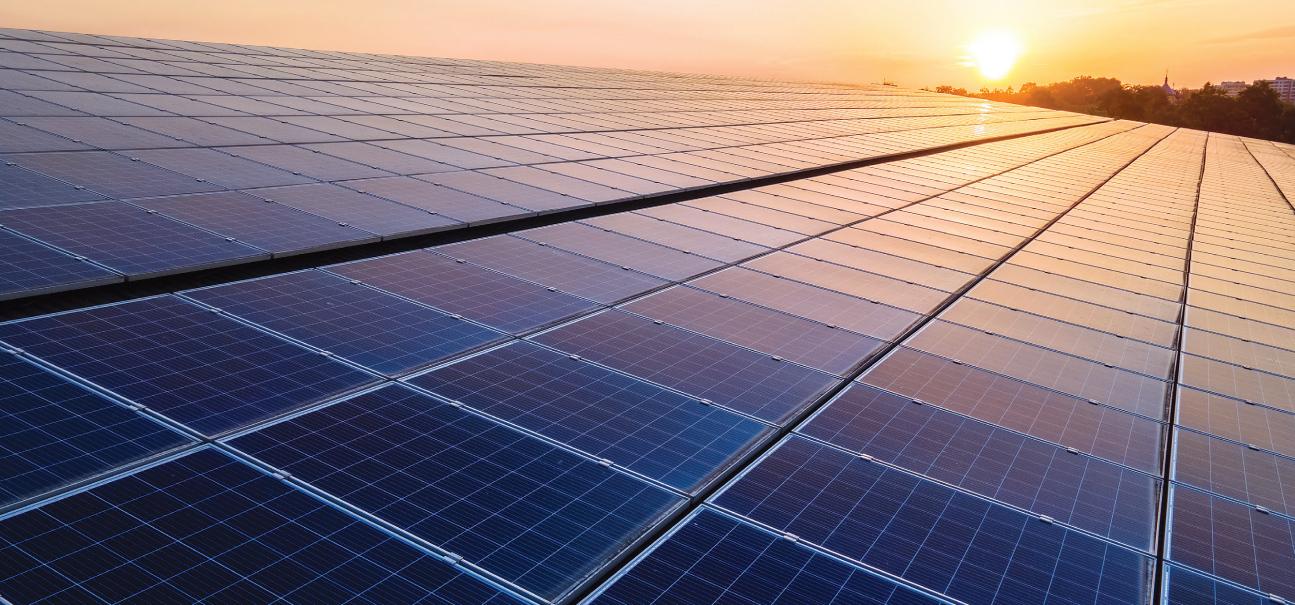
www.worldfutureenergysummit.com 11 DAY 1 | 16 JANUARY 2023 DAILY NEWS
With its vast solar resources, the MENA region has great potential for green hydrogen development.



“A 75% cut in methane emissions from fossil fuels by 2030 is imperative to stop the planet from warming to a dangerous level.”
Fatih Birol, IEA Executive Director
Time for a paradigm shift in water asset management
With demand for water expected to exceed supply by 40% by 2030, Omar Al Ameri, Water Network Development and Investments at TAQA, explores why it is critical to maximise the efficiency and capabilities of water systems.
Water is a uniquely complex sector with issues of equity, access and affordability playing key roles. Population growth, urbanisation and climate change are all contributing to driving increased demand for water worldwide. With time running out, it is imperative that we seize the opportunity for transformative change. The recently launched Mohamed bin Zayed Water Initiative is seeking to harness innovation and increased awareness about water scarcity to bring about such change. It is a laudable and much-needed initiative.
Historically, the challenge in managing water is the public perception that water is abundant and reliable. We are fortunate in the UAE to be able to turn on taps and access a free flow of water. But the downside is that this predictability has led to reactive asset management. Under this, assets operate with a ‘run-to-fail’ strategy, focusing on immediate requirements rather than proactive datadriven decision-making. Unlike other sectors, the water sector often faces challenges in adopting advanced approaches to asset management.
Water is a human right. Without water, life cannot thrive. This is the underlying complexity of the water sector, as well as one of the reasons it is so highly regulated. But, coupled with tight public sector budgets and priorities, these factors can limit investment in modern technologies, which hampers the approach of asset management. Other elements exacerbate this further. For example, most water infrastructure is located underground, fostering an ‘out of sight, out of mind’ syndrome, which encourages a reactive approach
to management. Secondly, the fragmented nature of the water sector impedes the implementation of advanced management systems. These factors create a difficult landscape to advance asset management practices within the industry.
With water scarcity looming, the implications of reactive and rudimentary asset management in the water sector can be far-reaching; from the potential failure of ageing infrastructure that may cause largescale service disruptions to the wasteful use of water and energy. It also exacerbates the water sector’s vulnerability to climate change impacts.
A shift is underway
Despite these challenges, the tide is turning, driven by a shift in perception and the deepening effects of water scarcity. Stakeholders recognise the need to invest in sophisticated asset management strategies that can predict, prevent, and respond dynamically to water-related challenges.
The transformation of water asset management –from reactive to preventive and predictive strategies – is being driven by digital technology. Modern technologies, such as IoT sensors, big data analytics, and AI, have empowered utilities with realtime asset monitoring tools, enabling them to predict failures earlier, and optimise maintenance schedules. Condition monitoring systems, such as vibration monitoring for pumps and partial discharge for motors, can optimise maintenance costs. These systems detect equipment imbalances and provide early warnings for minor repairs. This proactive approach prevents major corrective repairs and
The transformation of water asset management is being driven by digital technology.
Omar Al Ameri Water Network Development and Investments at TAQA
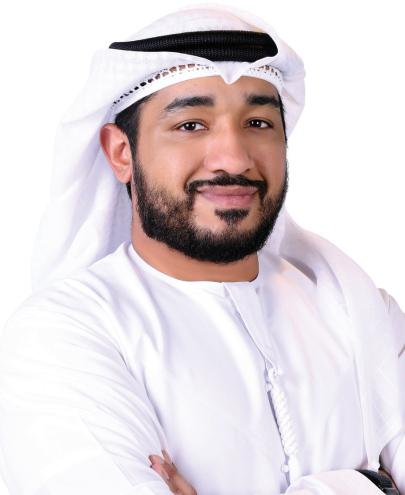
asset outages, leading to cost savings. Moreover, the pumping system’s energy consumption poses challenges. The ‘best efficiency point’ of the pump is correlated with the mode of operation. Advanced tools can optimise the pumping configuration to ensure the most efficient combination to run the pumps in line with the manufacturer’s recommended ‘best efficiency point’.
Increased efficiency here is also translating into increased resilience and the ability to confront the climate-related challenges of too much and too little water.
The future of water asset management
Looking ahead, a wave of digital advancements is set to revolutionise water asset management, offering greater levels of optimisation. Digital twins and virtual models of physical assets provide a powerful platform to simulate, analyse, and control asset performance, enhancing decision-making and risk management. AI and machine learning technologies power smart water networks, ensuring effective water distribution, precise leak detection, and efficient energy use, significantly reducing waste and promoting sustainability. Additionally, blockchain technologies are emerging as crucial tools for improving transparency, traceability, and efficiency in water rights management. Collectively, these technologies promise to transform water asset management, paving the way for a more water-resilient future.
TAQA is at the forefront of this transformation, pioneering technologies and practices that promise to redefine water asset management. The time for a paradigm shift is now, ensuring water is managed wisely for generations to come.
www.worldfutureenergysummit.com 13 DAY 1 | 16 APRIL 2024 DAILY NEWS
15
AGENDA: Pathway to 1.5 Forum
Omar Al Ameri of TAQA.
Image Credit: TAQA

